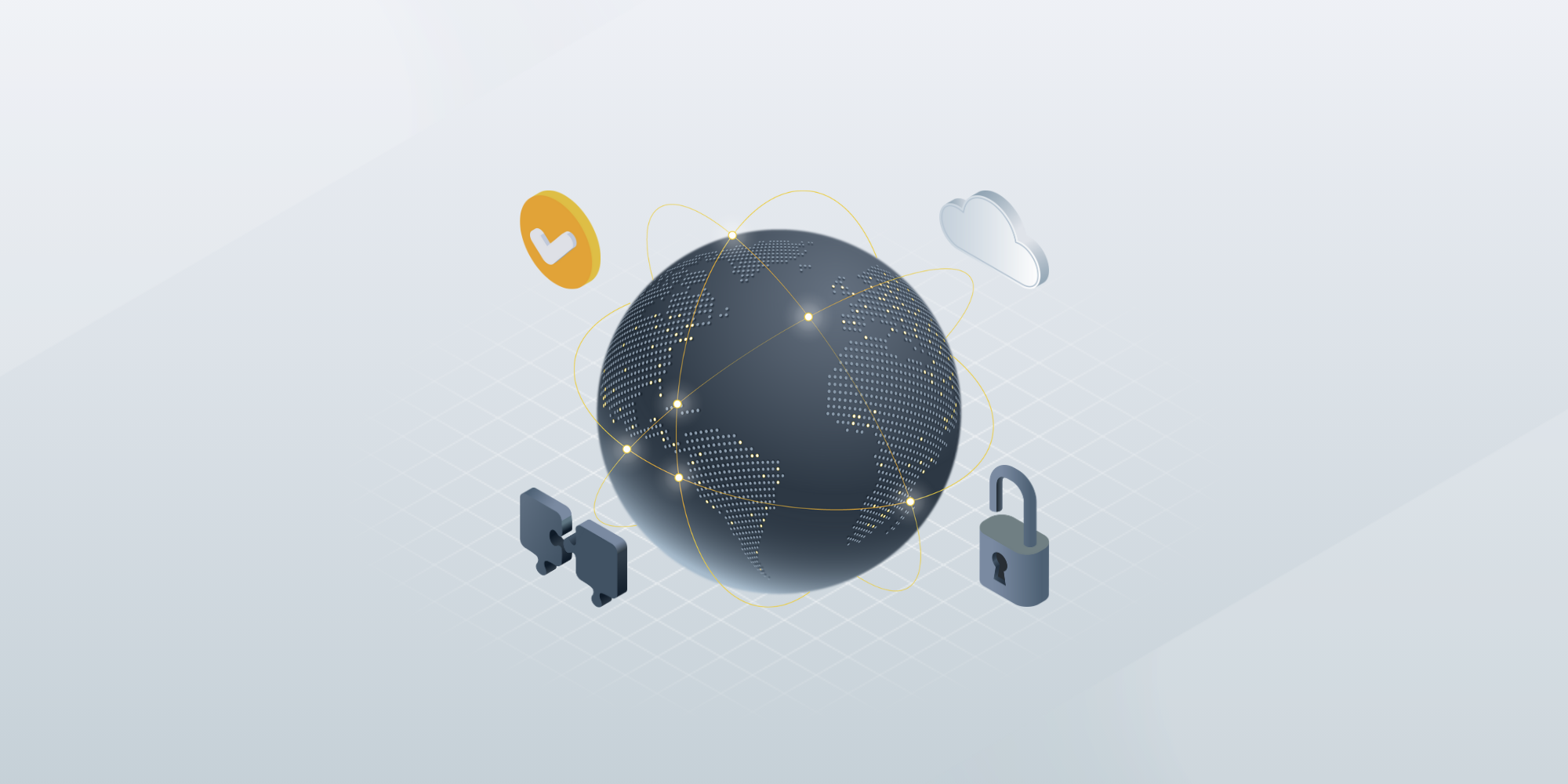Top 10 benefits and challenges of IT infrastructure outsourcing
 GroWrk Team
GroWrk Team
IT infrastructure outsourcing is on the rise; 37% of companies expect their spending on IT outsourcing to increase over the next three years, primarily for services such as cloud management, cybersecurity, app development, and day-to-day infrastructure support to external providers. The drivers are clear: reduce costs, access specialized expertise, and scale operations faster than internal teams alone can manage.
This guide examines the key benefits and common challenges associated with IT infrastructure outsourcing in 2025. Unlike traditional in-house management, outsourcing shifts responsibility to expert partners, unlocking new levels of efficiency, flexibility, and risk management.
Key takeaways
- Core benefits: Outsourcing IT infrastructure reduces costs, provides access to specialized expertise in areas like AI and cybersecurity, and frees teams to focus on core business priorities.
- Competitive edge: Companies gain faster scalability, stronger security, and 24/7 operational support compared to traditional in-house management.
- Challenges to address: Risks around data security, reduced control, and hidden costs can be managed with careful vendor selection and clear SLAs.
What is IT infrastructure outsourcing?
_2_11zon.jpg?width=600&height=300&name=it%20infrastructure%20outsourcing%20(5)_2_11zon.jpg)
IT infrastructure outsourcing is the practice of partnering with external specialists to manage the core technology backbone of your business. This includes servers, networks, data centers, cloud platforms, and cybersecurity.
Instead of handling everything in-house, organizations rely on outsourcing providers who bring the expertise, tools, and processes needed to keep systems reliable, secure, and cost-effective. While an internal IT team offers direct control, outsourcing provides access to broader knowledge and relieves businesses of the daily management burden.
At its core, outsourcing ensures:
-
Stability: Continuous monitoring, maintenance, and upgrades keep infrastructure aligned with business needs.
-
Flexibility: External experts can scale resources quickly to match growth or market shifts.
-
Efficiency: Internal teams are freed up to focus on strategic initiatives rather than routine troubleshooting.
For many organizations, outsourcing is a cost-effective alternative that reduces expenses while maintaining, or even improving, system reliability and security.
IT infrastructure components
Modern IT infrastructure is the foundation of reliable, secure, and scalable business operations. Key components include:
-
Hardware: Servers, laptops, routers, and storage devices that power daily operations.
-
Software: Operating systems, business applications, and management tools that enable workflows.
-
Networks: Secure connections that move data between users, systems, and locations.
-
Data storage: On-premises and cloud repositories for storing, backing up, and retrieving business data.
-
Cloud services: Virtualized environments that provide scalability, flexibility, and global access.
-
Cybersecurity tools: Firewalls, encryption, monitoring, and threat detection systems that safeguard assets.
-
AI and automation tools: Advanced platforms that predict failures, automate fixes, and optimize performance, increasingly central to infrastructure strategies.
Together, these components create a resilient IT environment that supports digital initiatives, ensures business continuity, and drives operational efficiency.
The role of an outsourcing partnerAn IT infrastructure outsourcing partner takes on the responsibility of designing, managing, and optimizing the systems that power your business. Their role goes beyond day-to-day maintenance to provide strategic alignment with long-term goals.
Key responsibilities include:
-
Setup and deployment: Implementing infrastructure and rolling out new systems.
-
Monitoring and maintenance: Ensuring uptime, applying updates, and resolving issues proactively.
-
Security management: Protecting systems with firewalls, encryption, audits, and compliance frameworks.
-
Performance optimization: Continuously tuning infrastructure to meet evolving business demands.
A strong outsourcing partner does more than keep the lights on, they act as an extension of your IT team, aligning infrastructure with business strategy, enabling scalability, and supporting innovation such as AI integration.
Common outsourced IT infrastructure services
Outsourcing provides access to specialized expertise and frees internal teams from routine management tasks. The most common IT infrastructure services include:
-
Cloud services and data centers: External providers host applications, data, and workloads on secure servers, improving scalability, flexibility, and performance. Outsourced data center management also ensures uptime, monitoring, and adherence to compliance standards.
-
Managed networks and security: Experts maintain connectivity, optimize performance, and safeguard systems with firewalls, intrusion detection, audits, and threat monitoring.
-
End-user support and helpdesk: Round-the-clock technical assistance resolves issues quickly, improving employee productivity while lowering in-house IT burdens.
-
Disaster recovery and backup solutions: Providers deliver reliable backups, rapid recovery, and tested plans to minimize downtime and protect critical business data.
These services enable organizations to scale, secure, and optimize their IT operations without straining internal resources, allowing teams to stay focused on innovation and core business priorities.
Key benefits of IT infrastructure outsourcing
_4_11zon.jpg?width=600&height=300&name=it%20infrastructure%20outsourcing%20(3)_4_11zon.jpg)
Outsourcing IT infrastructure delivers both immediate and long-term advantages for organizations. Core benefits include:
-
Cost savings: Reduce capital expenses on hardware and in-house staffing while controlling ongoing operational costs.
-
Specialized expertise: Gain access to skilled professionals in areas like AI, cloud, networking, and cybersecurity without the challenge of hiring and retaining scarce talent.
-
Focus on core business: Free internal teams from day-to-day infrastructure management so they can prioritize innovation, customer experience, and growth.
-
Operational efficiency: Outsourced providers bring proven processes, faster issue resolution, and reduced downtime.
-
Scalability and flexibility: Easily adjust resources to meet business demand, whether scaling up during growth or scaling down during slower periods.
-
Enhanced security and compliance: Providers offer advanced protections and ensure adherence to frameworks like GDPR, HIPAA, and SOC 2.
-
24/7 monitoring and support: Around-the-clock oversight detects and resolves issues before they impact operations.
-
AI-driven improvements: External partners can help integrate AI to support automation, predictive insights, and intelligent operations.
-
Strategic alignment: The right outsourcing partner acts as an extension of your IT team, aligning infrastructure with long-term business objectives.
-
Risk reduction: Outsourcing reduces vulnerabilities by introducing standardized processes, compliance oversight, and disaster recovery capabilities.
Enhance operational efficiency with IT infrastructure outsourcing
_3_11zon.jpg?width=600&height=300&name=it%20infrastructure%20outsourcing%20(4)_3_11zon.jpg)
Outsourcing IT infrastructure allows organizations to work smarter by reducing manual workloads, accelerating upgrades, and ensuring consistent operations. Providers bring specialized expertise and proven processes that internal teams may not have the bandwidth or tools to deliver.
Key efficiency drivers include:
-
Proactive maintenance: Regular updates, patches, and system tuning prevent problems before they disrupt operations.
-
Faster technology adoption: Providers introduce new tools and platforms quickly, keeping businesses competitive without overloading internal teams.
-
Optimized resource allocation: Routine IT management is offloaded, freeing in-house staff to focus on innovation and strategic initiatives.
-
Standardized processes: Outsourcing partners implement established best practices to create consistency, reduce errors, and ensure compliance.
-
Scalable operations with risk management: Infrastructure can be scaled up or down seamlessly, with built-in controls for security, compliance, and disaster recovery.
-
AI-powered automation: Advanced AIOps platforms predict downtime, automate fixes, and optimize performance, while IT teams oversee governance and strategy.
By combining human expertise with automation, outsourcing turns IT infrastructure into a reliable, efficient engine for growth.
Security and compliance in IT infrastructure outsourcing
_5_11zon.jpg?width=600&height=300&name=it%20infrastructure%20outsourcing%20(2)_5_11zon.jpg)
Security and compliance are critical considerations when outsourcing IT infrastructure. The right partner strengthens defenses, reduces risk, and ensures alignment with evolving regulations.
Advanced security practices
-
Firewalls, encryption, and intrusion detection safeguard networks and data.
-
Dedicated teams monitor threats continuously and respond quickly.
-
Regular audits identify vulnerabilities and drive corrective actions.
-
Backup and recovery systems minimize downtime in the event of failures.
-
AI-driven monitoring detects anomalies in real time and adapts to emerging risks.
Compliance assurance
-
Expertise with frameworks such as GDPR, HIPAA, and SOC 2 helps organizations meet regulatory obligations.
-
Documented processes and reporting provide transparency and reduce legal risk.
-
Service level agreements (SLAs) outline responsibilities and compliance standards.
-
Ongoing updates ensure infrastructure keeps pace with new laws and industry requirements.
By combining robust security measures with compliance expertise, outsourcing partners help businesses protect sensitive data, maintain customer trust, and avoid costly disruptions.
Business continuity and disaster recovery
_1_11zon.jpg?width=600&height=300&name=it%20infrastructure%20outsourcing%20(6)_1_11zon.jpg)
An effective outsourcing partner ensures your business can withstand disruptions by delivering robust disaster recovery (DR) and continuity planning. Their infrastructure, expertise, and proactive systems minimize downtime and maintain stable operations.
Disaster recovery solutions
-
Reliable backups and recovery plans minimize data loss and downtime.
-
Automated failover systems quickly restore operations during outages.
-
Regular testing ensures recovery strategies remain effective.
-
Cloud-based recovery options add speed, scalability, and flexibility.
-
AI-powered recovery tools predict risks and automate restoration for faster response.
Business continuity practices
-
Coordinated response teams act quickly during disruptions.
-
Real-time monitoring detects and resolves issues before they escalate.
-
Established continuity plans maintain service delivery under stress.
-
Built-in resilience ensures IT systems align with business goals and regulatory requirements.
By outsourcing continuity and recovery, organizations gain peace of mind knowing their IT environment can adapt and recover swiftly, even in the face of unexpected challenges.
Challenges and risks of IT infrastructure outsourcing
_6_11zon.jpg?width=600&height=300&name=it%20infrastructure%20outsourcing%20(1)_6_11zon.jpg)
While outsourcing provides significant benefits, it also comes with challenges that must be managed carefully. The most common risks include:
Security concerns
-
Sensitive data and systems may be exposed if vendors lack strong safeguards.
-
Clear roles and responsibilities are essential to ensure accountability.
-
Providers must be vetted for compliance with security and regulatory standards.
Loss of control
-
External teams may make decisions that don’t align with business goals.
-
Reduced oversight can delay responses to urgent issues.
-
Maintaining an internal liaison helps align outsourced services with company priorities.
Hidden costs
-
Poorly defined contracts can introduce unexpected fees or scope creep.
-
Weak planning may lead to delays and budget overruns.
-
Detailed SLAs with measurable outcomes reduce financial surprises.
-
Vendor lock-in: Over-reliance on one provider’s tools can limit flexibility. Opt for multi-cloud or open standards to remain adaptable.
-
AI integration challenges: Outsourced infrastructure must align with internal AI projects and workflows to avoid compatibility issues.
By identifying these risks early and addressing them through careful vendor selection, well-structured SLAs, and ongoing oversight, businesses can maximize the advantages of outsourcing while minimizing drawbacks.
Selecting the right IT infrastructure outsourcing partner
The success of IT outsourcing depends on choosing a partner that offers both technical expertise and strategic alignment. A strong provider will deliver reliability, scalability, and innovation while ensuring accountability through well-structured SLAs.
How to evaluate providers
-
Review their experience with businesses of your size and industry.
-
Ask for references and case studies to validate reliability.
-
Ensure clear communication practices and cultural alignment.
-
Assess scalability, can they support your growth and adapt to change?
-
Explore their use of AI and automation in service delivery.
-
Check their innovation roadmap for emerging tech like AI-driven security or quantum-ready systems.
Negotiating effective SLAs
-
Define measurable metrics for uptime, response times, and resolution.
-
Clearly outline roles, responsibilities, and escalation paths.
-
Include remedies or penalties for missed commitments.
-
Update SLAs regularly to reflect evolving business needs.
By carefully vetting providers and structuring SLAs, organizations can secure a partner that not only manages infrastructure but also supports long-term growth and resilience.
Why businesses outsource IT infrastructure management to GroWrk
GroWrk helps distributed teams simplify IT infrastructure operations with global scale, built-in security, and full lifecycle control, from procurement to retrieval.
-
Global coverage in 150+ countries
Deploy, manage, and retrieve IT equipment anywhere with local logistics, warehousing, and compliance built in. -
End-to-end lifecycle management
Handle everything from device procurement and configuration to offboarding, secure recovery, and disposal—all in one platform. -
Real-time tracking and asset visibility
Gain full oversight of your IT infrastructure with live inventory, audit trails, and asset health monitoring across distributed teams. -
Secure by design
Protect endpoints with zero-touch enrollment, remote locking, data wiping, and SOC 2-compliant processes. -
Transparent pricing with no hidden fees
Budget confidently with flat-rate, per-device pricing and no onboarding or integration costs. -
Scalable infrastructure support
Adapt quickly to growth or change—onboard new hires globally, manage temporary contractors, or scale down easily. -
Integrated with your stack
Connect GroWrk to 40+ HRIS, MDM, and ITAM tools for automated workflows across your IT ecosystem. -
24/7 global support
Get help anytime with a dedicated support team, live chat, and AI assistant built into the platform.
Offload your IT infrastructure burden and scale with confidence, GroWrk gives you the control, visibility, and flexibility your business needs. Schedule a demo today.
Frequently asked questions
What is IT infrastructure outsourcing?
It’s the practice of partnering with external providers to manage core IT systems such as servers, networks, cloud platforms, and cybersecurity.
What are the main benefits of outsourcing IT infrastructure?
Lower costs, access to specialized expertise, improved performance, scalability, and stronger security with around-the-clock monitoring.
How does outsourcing improve IT performance?
Providers deliver proactive maintenance, fast issue resolution, and enforce SLAs that ensure uptime and reliability.
What security risks should businesses watch for?
Potential risks include data breaches, over-reliance on vendors, and compliance failures. Strong security protocols, audits, and clear roles reduce these risks.
How do you choose the right outsourcing partner?
Evaluate their experience, references, ability to scale, and SLA structure. Look for transparent communication and cultural alignment.
How does outsourcing support AI and machine learning projects?
Leading providers build AI-ready infrastructure with secure compute capacity, seamless integrations, and data protection.
How can businesses avoid vendor lock-in?
Choose providers that support open standards and multi-cloud strategies, with flexible contracts that allow easy transitions.
How can outsourcing support a distributed workforce?
By using zero-trust security, remote access controls, and AI-driven monitoring, partners ensure secure access for global teams.






